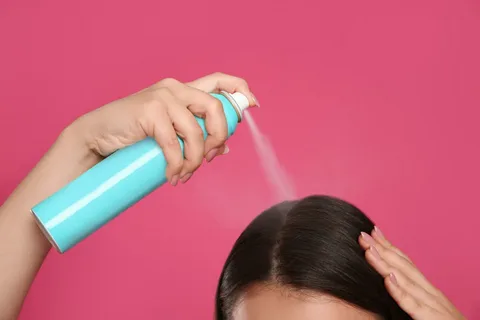Dry Shampoo Market segmentation by ingredients, usage patterns, and packaging preferences explained

The Dry Shampoo Market continues to expand globally, driven by distinct consumer segments defined by ingredient preferences, usage behavior, and packaging choices.
Segmentation by Ingredients: Clean, Natural, and Functional Trends
One of the most crucial market segmentation areas in the dry shampoo industry is the ingredient composition. Consumers today are highly conscious of what they apply to their bodies, and this awareness has triggered significant product diversification.
1. Natural and Organic Ingredients:
A growing portion of the market now demands dry shampoos formulated with organic or plant-based ingredients. These typically include rice starch, cornstarch, clay, oat flour, and herbal powders. Natural variants appeal to eco-conscious and health-oriented consumers who seek chemical-free, gentle solutions for their hair and scalp.
2. Synthetic and Functional Ingredients:
Some consumers prioritize performance and long-lasting oil absorption over natural credentials. Synthetic ingredients like silica and alcohol-based compounds are still common in aerosol products for fast results. Fragrance additives and conditioning agents are often added to these formulations to enhance user experience.
3. Specialized Formulations:
Newer products include active ingredients such as charcoal for deep cleansing, probiotics for scalp health, or botanical extracts for soothing sensitive skin. Some brands also provide tinted dry shampoos that cater specifically to different hair colors.
The trend toward ingredient transparency is evident. Product labels now highlight what's not included—like parabens, sulfates, and talc—just as much as what is.
Segmentation by Usage Patterns: Lifestyle-Centric Targeting
Consumers use dry shampoo in various ways, and this influences how products are positioned, packaged, and marketed. Segmenting the market by usage pattern helps brands cater more effectively to distinct buyer personas.
1. Busy Professionals and Students:
These consumers often use dry shampoo as part of their daily routine to save time in the mornings. Their main need is a quick fix that offers oil control, freshness, and volume. Aerosol spray formats dominate this segment due to ease of use and portability.
2. Fitness Enthusiasts and Travelers:
For those who are frequently on the move, dry shampoo is essential for post-workout freshness or travel convenience. Compact, mess-free options are ideal. Non-aerosol powders or foam formulas that don’t spill easily are popular among this group.
3. Minimalist and Low-Maintenance Users:
This user base is typically drawn to the “no-poo” movement or prefers to wash their hair less often to maintain natural oils. For them, dry shampoo is not just an emergency fix but a primary haircare product. Powder-based and eco-friendly formulations with fewer ingredients resonate most here.
4. Occasional or Special Use Consumers:
Some users only turn to dry shampoo for emergencies, events, or during specific seasons (e.g., winter). These consumers are more value-conscious and tend to purchase multipurpose products or travel-sized variants.
Brands are now designing marketing campaigns tailored to these distinct routines, emphasizing how their products fit specific lifestyles.
Segmentation by Packaging Preferences: Aerosol vs. Powder and Beyond
Packaging has become more than a functional detail—it’s now a key differentiator in dry shampoo market segmentation. Different consumer groups associate packaging with performance, sustainability, and value.
1. Aerosol Spray Cans:
Still the most widely used packaging format, aerosol sprays are valued for their ease of use and even application. However, concerns over environmental impact and respiratory safety are pushing some consumers to look for alternatives.
2. Non-Aerosol Powders and Foams:
These options appeal to eco-conscious users or those with sensitive skin. Powder formulations typically come in shaker bottles, squeeze tubes, or brush-top dispensers. Foams offer a fresh take, blending the no-rinse appeal of dry shampoo with a more hydrating texture.
3. Tinted and Colored Formats:
Tinted packaging variants cater to specific hair colors—blonde, brunette, red, or black—preventing the white residue often seen with generic dry shampoos. These products are packaged with color-coded labels for easy recognition and are usually sold through online or specialty beauty retailers.
4. Refillable and Sustainable Containers:
Sustainability-driven packaging such as aluminum tins, paper tubes, and refill pouches is emerging quickly. These appeal to the zero-waste movement and environmentally focused consumers. Some brands are even launching dry shampoo bars, eliminating packaging altogether.
Market Response to Segmentation Insights
Brands are leveraging segmentation data to develop hyper-targeted product lines. For instance, a brand may offer one product aimed at “post-gym freshness,” another for “volumizing during work hours,” and a third for “sensitive scalp, once-a-week users.” This kind of granularity enables personalized marketing and builds deeper customer loyalty.
Additionally, DTC (direct-to-consumer) brands are collecting usage data and offering quizzes to match consumers with ideal products based on their lifestyle and hair type. This personalization drives both higher conversions and greater customer satisfaction.
Conclusion: Adapting to Nuanced Consumer Needs
The Dry Shampoo Market is no longer one-dimensional. Its segmentation reveals a rich tapestry of consumer types, preferences, and priorities. By focusing on ingredient transparency, packaging sustainability, and real-life use cases, brands can more effectively meet the expectations of today’s informed, value-driven buyers.
Moving forward, brands that take segmentation seriously—designing specialized products for each identified niche—will have a clear competitive edge. Consumers no longer want generic beauty solutions. They expect tailored experiences that align with their beliefs, routines, and lifestyles.
- Art
- Causes
- Crafts
- Dance
- Drinks
- Film
- Fitness
- Food
- Games
- Gardening
- Health
- Home
- Literature
- Music
- Networking
- Other
- Party
- Religion
- Shopping
- Sports
- Theater
- Wellness


